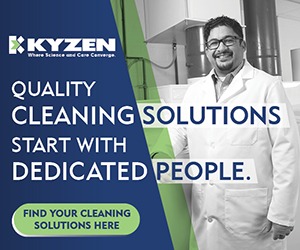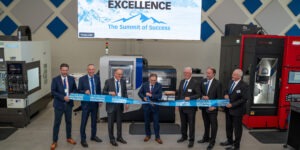Effective Ways to Finance New Technologies and Equipment
Emerging technologies can be difficult to finance because they are fairly new to the market and rapidly changing. How do you pay for these new technologies?
Posted: August 22, 2024

We operate in an ever-changing environment, where it seems technology moves at the speed of light. It’s difficult to keep up with these changes, learn about them, and determine how to use them most effectively and efficiently. Once we determine how to implement them, we have to figure out how to pay for them.
Emerging technologies can be difficult to finance because these technologies are fairly new to the market, rapidly changing, and, at least early in the product life cycle, their long-term residual values are unknown or fluctuate. For these reasons, many financial institutions are hesitant to offer loans for these purchases.
How do you pay for these technologies, especially if the expenditure is large and you don’t have or want to use cash?
Bank Line of Credit
 A bank line of credit (LOC) is a revolving line of credit that allows a borrower to access money, up to a set credit limit, as needed. Unlike a traditional term loan where the full amount is provided to the borrower upfront, the borrower only withdraws from the line as needed. The borrower only pays interest on the amount withdrawn from the LOC, not on the total amount available to borrow. The amount available to withdraw fluctuates as withdrawals and payments are made.
A bank line of credit (LOC) is a revolving line of credit that allows a borrower to access money, up to a set credit limit, as needed. Unlike a traditional term loan where the full amount is provided to the borrower upfront, the borrower only withdraws from the line as needed. The borrower only pays interest on the amount withdrawn from the LOC, not on the total amount available to borrow. The amount available to withdraw fluctuates as withdrawals and payments are made.
There are two types of LOCs: secured and unsecured. A secured line means you have pledged assets as collateral to secure the line. These have lower interest rates than unsecured lines, which require no collateral securitization.
LOCs provide flexibility of use as there are typically no restrictions on how the money can be used, which makes them a good option to fund new technologies and equipment.
Advantages of a line of credit include:
- Once approved, access to capital is quick.
- Offers flexibility in how the funds are used.
- You are only charged interest on the amount borrowed.
Asset-based Loans
An asset-based loan (ABL) is a type of revolving line of credit that is secured by various types of collateral. Collateral can include accounts receivable, inventory, equipment and real estate. For fabricating and metalworking companies, the inventory collateral could include raw material and finished goods inventory.
Advantages of an ABL include:
- Once approved, access to capital is quick.
- Offers flexibility in how the funds are used.
- Provides an ongoing funding source — as your asset base grows, your line of credit grows.
- You are only charged interest on the amount borrowed.
SBA (Small Business Administration) Loans
The U.S. Small Business Administration offers various types of loans to help small businesses grow — these range from microloans, loans as small as $500, to amounts up to $5.5 million.
Advantages of a SBA loan:
- Offer competitive terms.
- Lower down payments, flexible overhead requirements, may not require collateral securitization.
- Offer some unique loan programs for manufacturers.
Disadvantages of a SBA loan:
- SBA loans can only be obtained through an SBA-approved lender.
- The loans may have restrictions on how funds can be used.
- Can take longer to process than traditional bank loans or equipment loans.
Working Capital Loans
Working capital loans are often taken to help fund business operations and are not generally used for long-term asset purchases. They are term loans, where you receive a lump sum amount and have a fixed interest rate and payback term length.
Advantages of a working capital loan:
- Are typically short-term (up to 24 months) to help cover immediate operating needs.
Disadvantages of a working capital loan:
- No access to ongoing funding — if you need additional funds you need to apply for a new loan.
- Often tied to personal credit.
A warning for borrowers: Merchant Cash Advances (MCAs) are often presented as working capital. MCAs provide quick, upfront cash loans with extremely high fees, and payments are automatically drafted, often daily, from your account. Once you’ve taken an MCA it is extremely difficult to get out of. If the amount of working capital offered seems high and the approval process too quick and easy, consult your banker or accountant before you proceed.
Equipment Refinance for Cash Out
You have a lot of money tied up in your existing fabricating and metalworking equipment. These machines can be used to get cash or working capital, to help fund business operations, or to complete other purchases. Accessing the equity in this equipment involves refinancing the machines that have been paid in full or equipment that has low loan balances.
This type of loan usually comes from an independent equipment finance company that has expertise in the industry and equipment. They can assess your current equipment fleet, determine the amount of equity in those machines, and then refinance the equipment to provide cash-out that can be used to purchase the desired new technology.
Advantages of equipment refinancing:
- Approval process is fairly quick.
- No restrictions on use of funds.
- Could include consolidating loans from multiple vendors (if multiple machines are refinanced).
Grants
Grants are probably the most difficult to find payment option because grants are not available to all industries or for all equipment types. The best grant resource is often the equipment manufacturer or dealer as they are often aware of the organizations and government resources that offer grants for their specific variety of technology.
Advantages of grants:
- A grant doesn’t need to be paid back.
Disadvantages of grants:
- Have very specific requirements regarding how the money can be used.
- Application process is sometimes lengthy and complex.
When researching your financing options for emerging technologies, talk with the equipment manufacturer or the dealer from which you are purchasing the equipment. They often have insights into how other companies have arranged payment. If the equipment provider is unable to provide financing, research the options above.


















